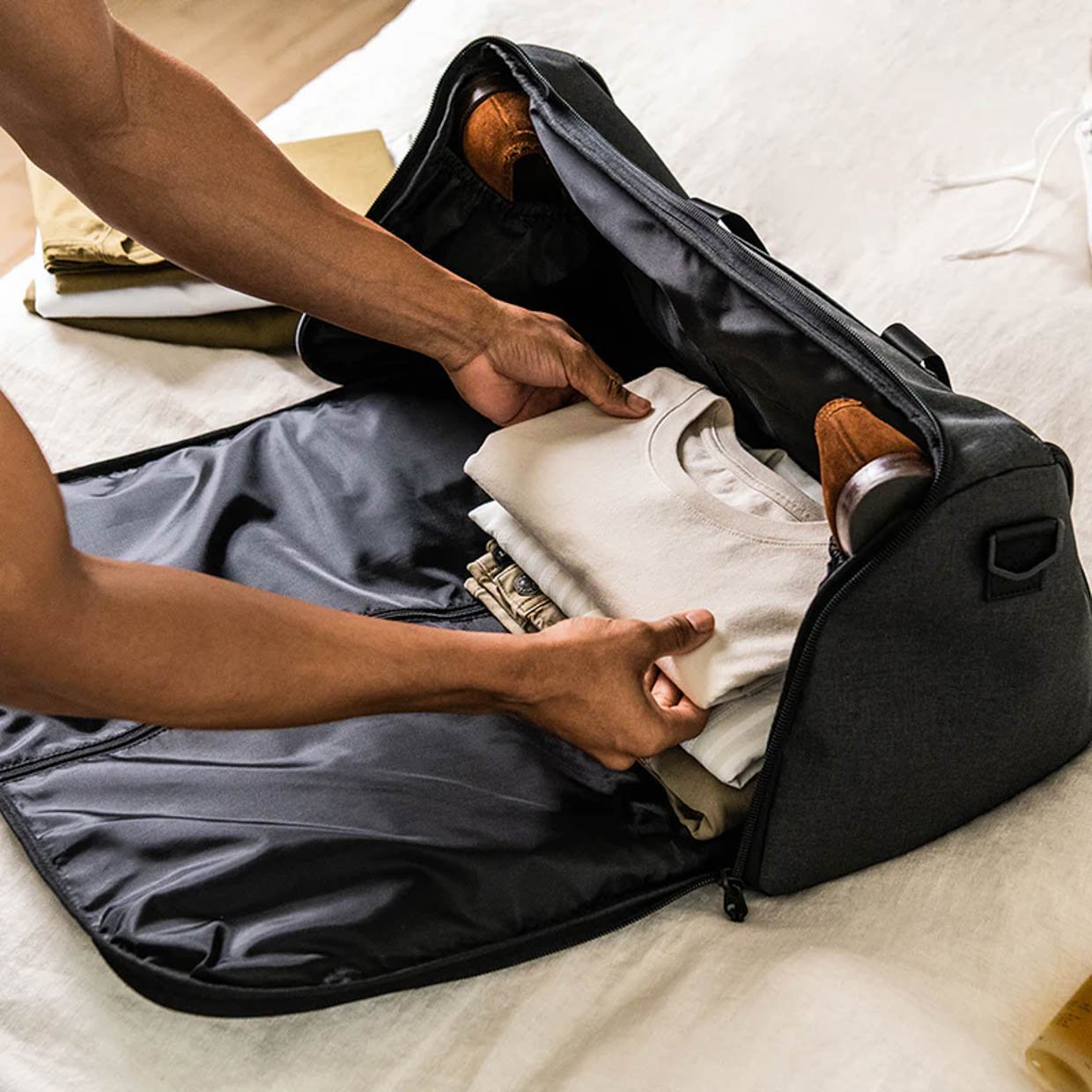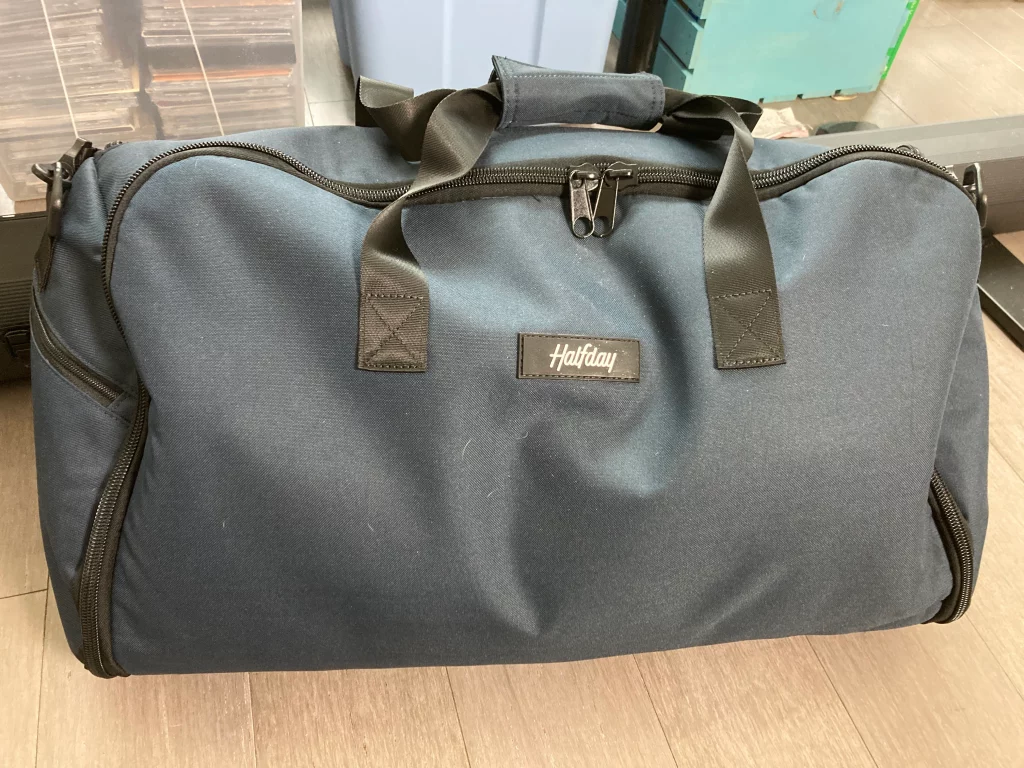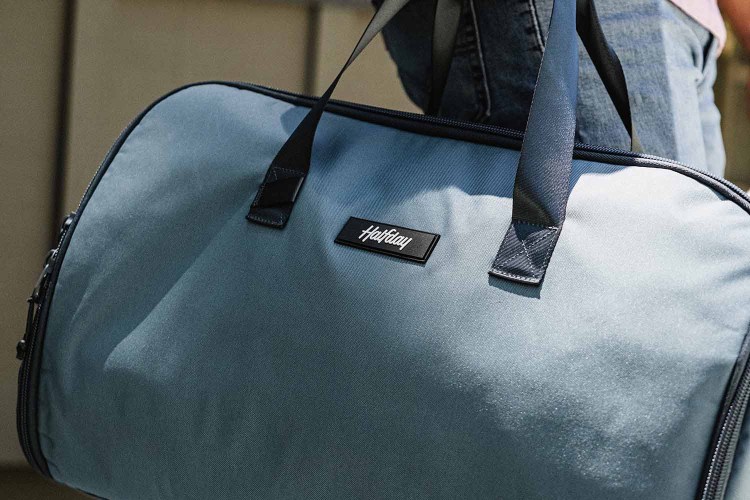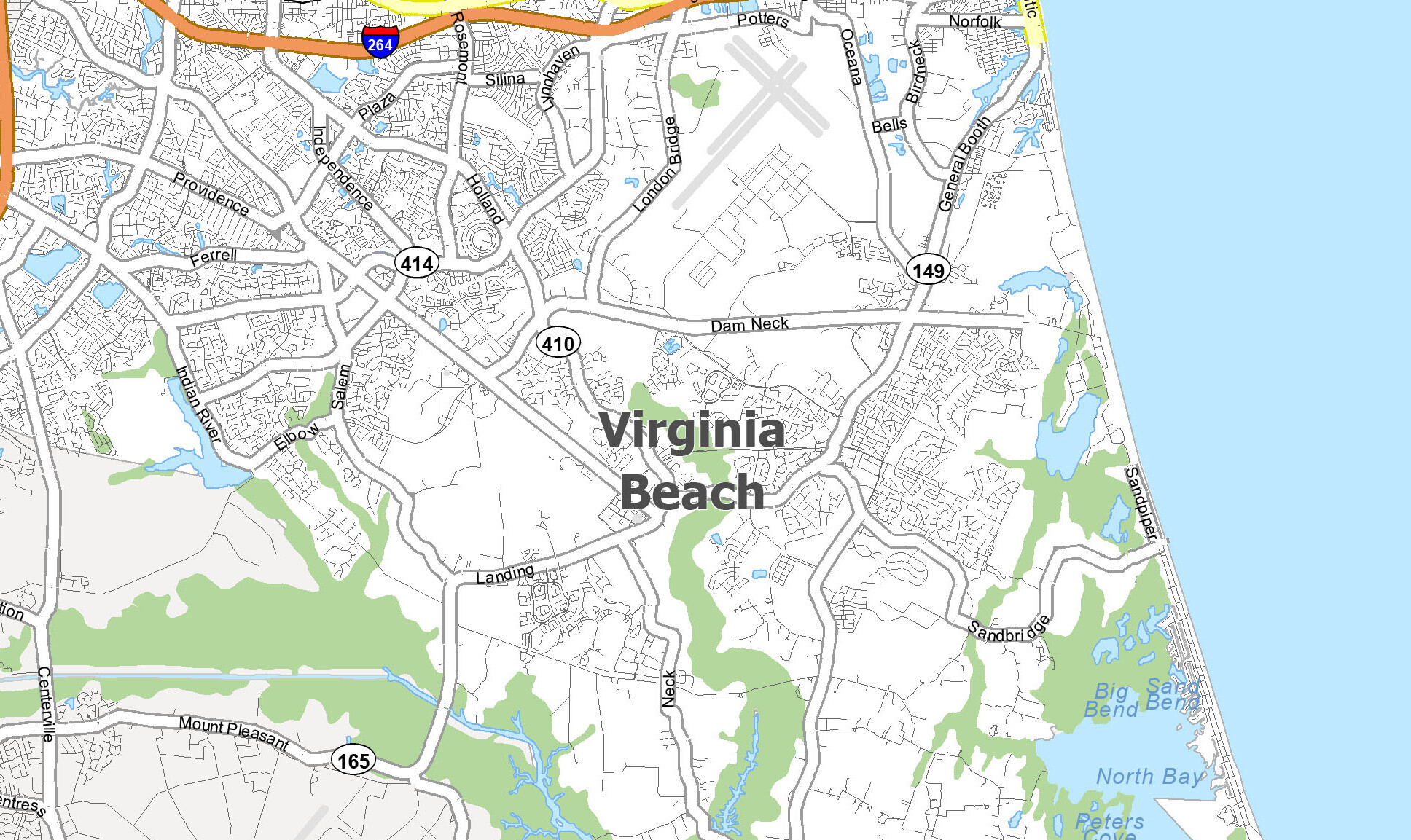Defining the Product

A half-day travel garment duffel is a specialized carry-on bag designed for quick trips. It’s a compact yet versatile option for individuals needing to transport clothing and essentials for a shorter excursion, typically lasting a few hours to half a day. These bags are built to prioritize functionality and portability, making them ideal for commuting, weekend getaways, or quick trips to appointments.
Key Features and Characteristics
Half-day travel garment duffels are distinguished by their compact size and streamlined design. They often feature a durable, water-resistant exterior, ensuring the contents remain protected during transport. Shoulder straps or a top handle allow for easy carrying, while internal compartments provide organization. These bags prioritize space optimization, enabling the user to carry just the necessary items for a shorter trip without excessive bulk. Internal organization features often include smaller pockets or dividers to keep clothing and accessories separate.
Materials Used
Various materials are employed in the construction of half-day travel garment duffels. Polyester and nylon are popular choices due to their lightweight nature and durability. These materials are typically water-resistant or have water-repellent treatments. Canvas or a blend of durable fabrics are also used, offering a more rugged and long-lasting option. The selection of material directly impacts the bag’s weight, durability, and cost.
Sizes and Capacities, Halfday travel garment duffel
Half-day travel garment duffels come in a range of sizes, accommodating different needs. Smaller models typically hold a change of clothes, toiletries, and a small personal item. Larger options can accommodate more items, including a few pairs of shoes or a small backpack. The size and capacity are often presented in dimensions or volume measurements to assist with selection. For instance, a 20-liter duffel might be suitable for a short business trip, while a 30-liter duffel might be appropriate for a day trip to the beach or a quick weekend getaway.
Common Use Cases
These bags are exceptionally well-suited for various situations requiring portability and organization. They are ideal for individuals traveling to sporting events, attending conferences, or visiting family and friends. The lightweight and easy-to-carry nature makes them suitable for commuting, especially when carrying just a change of clothes. They can also be used for shorter trips to the airport or to attend business meetings. These bags are particularly helpful for those who need to quickly transport their clothing and essentials without overpacking or excessive weight.
Target Audience
My half-day travel garment duffel is designed for the modern professional, the weekend warrior, and the savvy student. These individuals value practicality, style, and efficiency, especially when juggling multiple commitments. They are looking for a solution that seamlessly integrates into their busy lives, providing the perfect balance between functionality and fashion.
Demographics of Potential Customers
This target audience spans across various age groups and professions. Key demographics include young professionals (25-40 years old) who frequently travel for business or personal reasons, and students who need a reliable and stylish way to carry their belongings for weekend trips or excursions. They are likely to be digitally savvy, active in social spheres, and appreciate quality craftsmanship. Furthermore, they are often environmentally conscious, prioritizing sustainable and ethically produced materials. The product caters to both genders, with equal appeal for men and women.
Psychographics of Potential Customers
Beyond the numbers, their psychographic profiles are equally important. These individuals are often characterized by their:
- Focus on Efficiency: They value products that save them time and streamline their daily routines. A half-day travel garment duffel allows them to pack efficiently and quickly, eliminating the hassle of multiple bags and the stress of packing and unpacking.
- Prioritization of Style: They seek items that reflect their personal style and enhance their image. A well-designed duffel can act as a statement piece, complementing their attire and reflecting their refined taste.
- Appreciation for Quality: They are drawn to durable and well-made products that will last. The use of premium materials and thoughtful design ensures longevity and a satisfying user experience. This is crucial for repeated use.
- Active Lifestyle: They lead active lifestyles, be it attending conferences, traveling for work, or pursuing hobbies. Their travel needs often require packing light and organizing their essentials for quick access. The duffel bag’s organization features make it practical for these active lifestyles.
Needs and Motivations of Target Audience
Understanding the needs and motivations behind their purchasing decisions is key. This target audience seeks a solution that meets their specific needs, be it for:
- Business Travel: A well-organized duffel can simplify the process of packing and unpacking, ensuring they have all the essentials readily available for meetings or presentations. A stylish and practical option will enhance their professional image.
- Weekend Getaways: The convenience of packing light and the ability to carry all necessary clothing and essentials are crucial factors when planning a weekend trip. The duffel’s ease of use and stylish design enhance the overall travel experience.
- Student Trips: A sturdy and affordable option for students to carry their belongings for short trips or excursions. The organized compartments are perfect for keeping their books, notebooks, and other academic supplies organized.
Comparison of Different Customer Segments
Different customer segments have varying priorities. For example, business travelers might prioritize space for professional attire and electronics, whereas weekend warriors may need more space for leisure gear. Students might prioritize affordability and practicality.
Buyer Persona: The “Urban Explorer”
The “Urban Explorer” is a 28-year-old marketing professional. She lives in a bustling city and travels frequently for work and weekend getaways. She values style and functionality. Her motivation is to find a stylish and practical bag that seamlessly integrates into her fast-paced lifestyle, enabling her to effortlessly transition between work and leisure. She is interested in sustainable and ethically produced materials. Her needs include ample space for work attire, laptop, and personal essentials. She prioritizes quick access to her belongings, emphasizing the convenience and organization of the bag.
Competitive Landscape

The half-day travel garment duffel market is surprisingly diverse, encompassing a range of products from budget-friendly backpacks to high-end luggage sets. Understanding the competition is crucial for positioning our product effectively and highlighting its unique advantages. Analyzing the strengths and weaknesses of existing options allows us to identify gaps in the market and tailor our product to meet specific customer needs.
A thorough competitive analysis helps us refine our marketing strategy, understand pricing benchmarks, and ensure our product stands out in a crowded marketplace. This analysis also helps in developing effective marketing campaigns and determining our target audience’s preferences and needs.
Direct Competitors
This section examines products directly competing with a half-day travel garment duffel, focusing on features, pricing, and target audiences. These competitors share a similar purpose – providing convenient, organized, and stylish solutions for short trips.
- Traditional Garment Duffles: These often come in a variety of sizes and materials, from nylon to canvas. Their strengths lie in their simple, classic design and often lower price point. However, they frequently lack the internal organization and specialized compartments found in more modern options. Target audiences are typically budget-conscious travelers or individuals seeking a straightforward carrying solution.
- Small Rolling Suitcases: These offer the convenience of wheels for easier transportation, but can be bulky and less practical for carrying garments only. Pricing tends to be higher than traditional duffles but lower than specialized travel garment bags. Target audiences are typically those needing a bit more space than a backpack or duffel, but still want portability.
- Large Backpacks: Backpacks, particularly those with dedicated compartments for clothing, are direct competitors. Their strengths lie in their portability and often versatile design. However, some lack the dedicated garment storage compartments of our product. Target audiences often include those prioritizing practicality and comfort for travel.
Indirect Competitors
Indirect competitors include alternative solutions for short trips, such as:
- Foldable Garment Bags: These offer lightweight and space-saving options, perfect for those who want to minimize luggage size. Their limitations include less internal organization and potentially lower durability compared to hard-shell cases. Their target audience is often those who need to maximize space and portability.
- Carry-on Suitcases: While not explicitly designed for garments only, carry-on suitcases might be considered indirect competitors. They are generally larger and more expensive, but provide more space and organization. Target audiences seeking a more comprehensive travel solution fall under this category.
- Travel Cubes or Organizers: These are accessories that enhance the organization and space-efficiency of existing luggage. They are cost-effective and increase the usability of other products. Their target audience is often those seeking to optimize existing luggage.
Key Feature Comparison
| Feature | Traditional Duffle | Small Rolling Suitcase | Large Backpack | Foldable Garment Bag | Half-Day Travel Garment Duffel |
|---|---|---|---|---|---|
| Organization | Basic | Moderate | Moderate to Good | Basic | Excellent |
| Portability | Good | Excellent | Good | Excellent | Excellent |
| Durability | Moderate | Good | Good | Moderate | High |
| Size/Capacity | Variable | Small to Medium | Large | Variable | Optimized for half-day trips |
| Price | Low | Medium | Medium | Low | Medium |
Unique Selling Propositions (USPs)
Our half-day travel garment duffel distinguishes itself by combining the portability of a backpack with the dedicated garment storage of a duffel, maximizing space utilization for short trips. Its unique design allows for quick packing and unpacking. Its targeted size makes it an ideal solution for travelers needing to carry only necessary items, which reduces travel time.
Design Considerations
Crafting a half-day travel garment duffel requires meticulous attention to detail, prioritizing both functionality and aesthetic appeal. A well-designed duffel not only protects clothing but also enhances the user’s experience during a quick trip. Ergonomics, material selection, and ease of use are crucial aspects that will define the success of this product.
Ergonomics for Comfort and Efficiency
Ergonomic design is paramount in ensuring user comfort and efficiency. A well-designed duffel bag should be comfortable to carry for extended periods. This includes considerations for weight distribution, handle placement, and strap design. Proper weight distribution ensures a balanced load, reducing strain on the user’s back and shoulders. Strategically placed handles and adjustable straps allow for optimal carrying comfort. A padded shoulder strap, for example, can significantly improve the user’s experience, reducing discomfort during travel.
Material Selection for Durability and Weather Resistance
Selecting the right materials is critical for durability and weather resistance. A half-day travel duffel needs to withstand the rigors of daily use. High-quality, water-resistant fabrics like durable nylon or polyester are excellent choices. The material should be resistant to abrasion and tearing to maintain its structural integrity over time. Consider incorporating reinforced stitching at stress points like handles and seams for added longevity. Furthermore, water-resistant coatings or laminated materials enhance the duffel’s ability to protect garments from rain and moisture.
Ease of Use and Carrying Features
User-friendly design elements are crucial for a positive experience. Easy access to contents is vital, especially during a hurried trip. A large, wide opening or multiple compartments can facilitate quick access. Internal organization systems, such as dividers or zippered pockets, are also beneficial. Lightweight yet robust materials are essential for easy carrying. Multiple carrying options, such as shoulder straps, top handles, and possibly a crossbody strap, enhance flexibility and adjustability, catering to various user preferences.
Innovative Design Features
Enhancing the user experience requires innovative design features. Consider incorporating a built-in compression system to reduce the duffel’s size for compact storage or travel. An integrated, retractable luggage tag with customizable information could streamline identification and enhance security. A reflective strip for enhanced visibility during low-light conditions could improve safety. A lockable zipper for added security and peace of mind is another feature to consider. Finally, a clever interior design with a dedicated compartment for shoes and dirty clothes can improve the overall organization.
Visual Representation of the Duffel Bag Design
Imagine a duffel bag with a streamlined silhouette. It features a wide, zippered opening for easy access to contents. Two robust, padded shoulder straps and a reinforced top handle ensure comfortable carrying. A water-resistant outer shell, constructed from durable nylon, protects the contents from the elements. Inside, the duffel is organized with internal dividers and zippered pockets. A dedicated compartment for shoes or dirty clothes enhances organization. A reflective strip runs along the sides for visibility. A lockable zipper provides extra security. The duffel’s overall design emphasizes functionality and a contemporary aesthetic.
Functionality and Features
This section dives into the practical aspects of our half-day travel duffel bag, focusing on its internal organization, essential features, closure systems, and portability. A well-designed duffel can make a huge difference in a smooth travel experience, especially for quick trips.
A carefully considered layout, strategically placed compartments, and durable materials are crucial for maximizing space and protecting belongings. The functionality of the duffel bag extends beyond simple storage; it should also enhance the user’s experience with intuitive design choices.
Internal Organization for Easy Packing
The internal organization of the duffel bag is a critical component for ease of packing and unpacking. Employing a modular approach, we will divide the interior space into distinct zones. This will allow users to separate clothing, toiletries, electronics, and other essentials, leading to a more organized and efficient packing process. Clear dividers and designated pockets within the main compartment will further enhance the packing experience, preventing items from shifting during transport.
Essential Features and Compartments
To ensure the duffel bag is truly functional, we’ve identified key features and compartments for storing travel essentials. These compartments should not only accommodate but also organize items effectively.
- A large main compartment for clothing and other essentials. This compartment will have ample space for a typical half-day trip, accommodating a change of clothes, personal items, and small accessories.
- A separate zipped pocket or organizer for smaller items like toiletries, documents, or electronic devices. This will ensure easy access and prevent these items from getting lost in the main compartment.
- A padded sleeve for laptops or tablets, securing these sensitive items from damage and preventing them from shifting within the bag.
- Elastic straps or dividers for shoes and other bulky items, maximizing space and preventing the bag from looking too disorganized.
Closure Systems
The closure system plays a vital role in the duffel bag’s overall functionality and security.
- A robust zipper system is essential for securing the bag and preventing items from falling out. High-quality zippers, reinforced with extra stitching, will ensure the bag can withstand the rigors of travel.
- The use of secure, adjustable straps will ensure the duffel stays closed and secure even when being carried by a single person.
- A combination of zippers and straps can provide the optimal balance of security, ease of access, and adjustability for the bag’s closure.
Portability and Maneuverability
The bag’s portability and maneuverability are paramount for a seamless travel experience.
- Ergonomic handles are essential for easy carrying and handling. These handles should be strong enough to hold the weight of the bag and prevent discomfort during transport.
- A comfortable shoulder strap will be included, allowing users to carry the bag hands-free for greater maneuverability.
- Consideration of a trolley attachment point for the bag will further improve its portability, especially when used on public transport. This attachment will allow the bag to be effortlessly loaded onto a luggage trolley.
Pricing and Value Proposition
Setting the right price for a half-day travel garment duffel is crucial for attracting customers and ensuring profitability. It involves a delicate balance of considering production costs, market competition, and the perceived value the product offers. A well-defined value proposition is essential to justify the price point and establish a competitive edge in the market.
Factors Influencing Pricing Strategy
Several factors influence the pricing strategy for half-day travel garment duffels. Understanding these elements is vital for determining a competitive and profitable price point. Production costs, including materials, labor, and manufacturing overhead, form the foundation of pricing. Market research and competitor analysis provide insights into pricing trends and the value customers are willing to pay for similar products. Finally, the perceived value of the product, including its features, quality, and design, plays a significant role in determining the final price.
Value Proposition of Half-Day Travel Garment Duffels
Half-day travel garment duffels offer a unique value proposition in the travel gear market. These products cater to individuals needing a compact yet functional solution for shorter trips, often combining portability with the capacity to carry essential garments. The emphasis on organization and easy access makes these duffels appealing to busy individuals.
Comparing Pricing of Different Models and Sizes
The pricing of half-day travel garment duffels varies based on several factors, including the material quality, size, features, and brand recognition. A smaller duffel, designed for a single person and a half-day trip, might be priced at $50-$100, offering basic organization. A larger duffel, suitable for two people and a weekend trip, could range from $100-$200, depending on the added features, like multiple compartments or reinforced zippers.
Justifying the Price with Value Proposition
The value proposition of a half-day travel garment duffel justifies its price when considering the features and benefits it offers. For instance, a duffel with durable materials, well-organized compartments, and a lightweight design would justify a higher price compared to a basic duffel with limited features. The value proposition should highlight how the product solves a specific need for the target customer, like saving time, maximizing space, or ensuring the safety of garments during travel. The quality and durability of the materials, along with the added features, justify the price. A customer’s perceived value of a product can significantly impact their purchasing decision.
Manufacturing and Production
Bringing a half-day travel garment duffel from concept to consumer requires careful consideration of manufacturing processes. This involves selecting appropriate materials, determining production methods, and establishing quality control procedures. Understanding the nuances of these aspects ensures the final product meets the needs of the target audience while maintaining profitability and sustainability.
Different Manufacturing Processes
Various methods are employed for producing duffels, each with its own advantages and disadvantages. Common processes include sewing, knitting, and weaving. Sewing is often preferred for its versatility in creating complex shapes and intricate designs, particularly in garment duffels that need specific compartments and closures. Knitting and weaving are more suited for creating seamless fabrics, which can lead to lightweight and durable duffels, but may limit the design complexity. The chosen method will directly influence the overall quality and cost of the final product. Factors like the desired durability, aesthetic, and the availability of skilled labor play a critical role in the selection process.
Ethical and Sustainable Manufacturing Practices
Ethical and sustainable manufacturing practices are crucial for long-term success. This involves sourcing materials from ethical suppliers, ensuring fair labor practices throughout the production chain, and minimizing environmental impact. For example, using recycled or organic materials for the duffel bag reduces the environmental footprint. Fair wages and safe working conditions for factory workers are also vital components of ethical production. Companies prioritizing these practices gain a competitive edge while building a positive brand image with environmentally and socially conscious consumers. Companies that fail to adhere to these principles may face negative publicity and a loss of market share.
Quality Control Measures
Robust quality control measures are essential to ensure the product meets specified standards. Inspection points throughout the production process, from raw material inspection to final product testing, help identify and rectify defects early. Quality control procedures often include checks for material defects, stitching quality, closure functionality, and overall durability. A comprehensive quality control system helps minimize defects, improve product consistency, and enhance customer satisfaction. High-quality control is crucial for maintaining a reputation for reliability and product excellence. Examples of such measures include regular audits of factories and suppliers, and employing rigorous testing protocols.
Competitive Production Methods
Competitors use a variety of production methods, often tailored to their specific strengths and target markets. Some might leverage specialized machinery for faster production or opt for outsourcing to lower-cost regions. Others might prioritize local production to maintain closer control over quality and labor standards. Understanding these strategies is important for staying competitive and understanding how to best position your product in the market. It’s crucial to compare the strengths and weaknesses of different production methods and tailor the approach to your product’s specific needs. For example, a high-end duffel might benefit from bespoke production methods, while a mass-market duffel might utilize more standardized approaches. Understanding these different approaches allows for strategic decision-making in product development.
Marketing and Sales Strategies: Halfday Travel Garment Duffel

Attracting the right customers and driving sales for a half-day travel garment duffel requires a well-defined marketing strategy that resonates with the target audience. This strategy needs to encompass various channels and tactics to build brand awareness, generate leads, and ultimately convert those leads into satisfied customers. Understanding the competitive landscape and the unique value proposition of the duffel is crucial to crafting a successful marketing and sales plan.
A key component of success is a comprehensive understanding of the target audience’s needs, motivations, and purchasing behavior. This understanding is then used to develop targeted marketing campaigns and select appropriate sales channels. The marketing approach should highlight the product’s key features, emphasizing how they address the customer’s specific needs and desires.
Marketing Strategy
The marketing strategy for the half-day travel duffel needs to leverage multiple channels to reach the target audience effectively. A strong online presence is essential, coupled with strategic partnerships and public relations efforts. Building a strong brand identity is critical to setting the product apart in the market.
- Digital Marketing: Leveraging social media platforms like Instagram, Facebook, and Pinterest is crucial for visual appeal. Targeted ads on platforms like Google and social media can reach potential customers based on their interests and demographics. A user-friendly website with high-quality product photography and detailed descriptions is essential for online sales.
- Influencer Marketing: Collaborating with travel bloggers, fashion influencers, and outdoor enthusiasts is a powerful way to generate buzz and credibility. Influencers can showcase the duffel in real-world travel scenarios, demonstrating its practicality and style. This method can be highly effective in building trust and driving sales.
- Public Relations: Press releases and media outreach can generate positive publicity and increase brand awareness. Collaborating with travel publications and fashion magazines can expose the product to a wider audience. Consider partnerships with travel agencies and tourism boards to further expand reach.
Advertising Campaigns
Advertising campaigns should be tailored to the target audience, emphasizing the benefits of the duffel. Visuals and storytelling are critical for capturing attention and conveying the product’s value proposition. Consistent branding throughout the campaign is essential to building brand recognition.
- Focus on Lifestyle: Instead of just highlighting features, focus on lifestyle imagery. Show people using the duffel for various travel scenarios—from airport runs to weekend getaways. Emphasize the ease of packing, the durability of the material, and the convenience of the design.
- Highlight Versatility: Showcase how the duffel can be used for different occasions. Feature it in various settings, emphasizing its adaptability for business trips, leisure travel, and everyday use.
- Use Testimonials: Incorporate customer testimonials and reviews to build trust and credibility. Real-life experiences from satisfied customers can significantly impact potential buyers’ perceptions.
Sales Channels
A multi-channel approach is essential to maximize reach and customer convenience. Online platforms offer a wide audience, while physical retail locations can provide hands-on experience. A clear understanding of the advantages and limitations of each channel is crucial.
- E-commerce Platforms: Establishing a presence on major e-commerce platforms like Amazon, Etsy, or Shopify allows for wider market access and streamlined purchasing. This can offer a large pool of potential customers.
- Retail Partnerships: Collaborating with outdoor retailers, travel accessories stores, or department stores can extend brand reach and provide access to a more traditional customer base. Strategic partnerships can lead to increased brand visibility and sales.
- Direct-to-Consumer Website: A dedicated website for direct sales provides complete control over branding and customer experience. This channel offers opportunities for personalized marketing and customer relationship management.
Branding
A strong brand identity is critical for product recognition and differentiation. This includes a memorable logo, consistent visual elements, and a clear brand message that resonates with the target audience.
Consistent branding helps establish trust and recognition, ultimately leading to higher sales and customer loyalty.
- Visual Identity: Develop a logo and color scheme that reflect the brand’s values and target audience. This should be consistent across all marketing materials.
- Brand Messaging: Craft a clear and concise brand message that highlights the product’s unique benefits and value proposition. This should be consistent across all communication channels.
- Customer Experience: Maintain a positive and consistent brand experience at every touchpoint, from website interactions to customer service. This builds customer loyalty and encourages repeat purchases.
Customer Experience

Creating a positive customer experience is paramount to the success of any product. A seamless and enjoyable experience from initial discovery to post-purchase interactions fosters brand loyalty and positive word-of-mouth referrals. This section dives into the crucial elements of creating a strong customer experience for our half-day travel garment duffel.
Crafting a Positive Customer Experience
A positive customer experience stems from a combination of factors, starting with a clear and informative product presentation. Detailed product descriptions, high-quality images, and user-friendly website navigation contribute significantly. Easy-to-understand return and exchange policies further enhance the customer journey. Responsive and helpful customer service is vital to address any questions or concerns promptly and effectively.
Customer Service Process for Returns and Exchanges
A well-defined return and exchange policy is critical for building trust and handling potential issues efficiently. A simple and transparent process is essential. Clearly Artikel the timeframe for returns, the conditions under which a return is accepted, and the method for processing refunds or exchanges.
- Return Window: A 30-day return window is a common and reasonable timeframe for most products. This allows customers ample opportunity to assess the duffel’s suitability for their needs.
- Return Conditions: Specify the conditions under which returns are accepted. For example, the product must be in its original packaging, unused, and with all tags attached. This prevents customers from returning used or damaged items.
- Return Process: Provide a clear and easy-to-follow process for initiating a return. This could include a dedicated online form, a phone number, or an email address for inquiries. Include detailed instructions on packaging the return and providing necessary documentation.
Gathering Customer Feedback
Collecting customer feedback is invaluable for product improvement and understanding customer needs. Employ various methods to gauge opinions and suggestions.
- Surveys: Utilize online surveys to gather feedback on product features, usability, and overall satisfaction. Target customers both during and after their purchase. Ask specific questions to gain insightful responses.
- Reviews and Ratings: Encourage customers to leave reviews on product pages and social media platforms. Positive reviews can build trust and credibility, while negative reviews offer opportunities for improvement. Respond to both positive and negative reviews to show engagement and demonstrate a commitment to customer satisfaction.
- Social Media Monitoring: Actively monitor social media platforms for mentions of the brand and the product. Track customer sentiment and identify areas for improvement. Engage with customers directly on social media platforms to address concerns or collect feedback.
Examples of Excellent Customer Service Practices
Excellent customer service practices go beyond simply addressing issues. They demonstrate a commitment to exceeding customer expectations.
- Proactive Communication: Inform customers about potential delays or issues proactively. This builds trust and reduces customer frustration. For example, if a shipping delay is anticipated, communicate this upfront.
- Personalized Support: Address customer concerns with empathy and personalization. Acknowledge their specific situation and tailor the solution to their needs. Personalizing responses shows that customer concerns are taken seriously.
- Fast Resolution: Resolve customer issues quickly and efficiently. Minimize wait times and ensure that customers feel their concerns are being addressed promptly. Establish a clear timeline for issue resolution.
Product Variations and Expansions
Halfday travel garment duffel – Expanding our half-day travel garment duffel beyond its initial design opens doors to a wider customer base and increased market share. Strategic variations and expansions can cater to diverse needs and preferences, driving greater customer satisfaction and loyalty. This section explores potential product variations, expansion opportunities, and niche markets to solidify our position in the travel gear industry.
Potential Product Variations
To appeal to a broader audience and cater to various needs, different product variations are crucial. Offering a range of sizes, colors, and materials allows customers to select the perfect duffel for their specific requirements.
- Different Sizes: A range of sizes, from a compact “Essentials” option to a more spacious “Explorer” model, will accommodate various needs. For instance, the “Essentials” size would be ideal for shorter trips or for individuals who prefer a lightweight carry-on. The “Explorer” size would accommodate longer trips or more extensive packing needs.
- Color Options: Introducing diverse color palettes allows customers to match the duffel to their personal style. Popular colors such as navy, olive green, and deep red, alongside more unique and trendy hues, can appeal to diverse aesthetics.
- Material Variations: Different materials offer varying durability and water resistance. A lightweight, water-resistant nylon would be appropriate for most users, while a reinforced, water-repellent canvas option could appeal to those needing extra protection against the elements.
Expansion Opportunities
Expanding beyond the core product can unlock new revenue streams and solidify our brand’s presence. Consider these possibilities.
- Accessory Kits: Offer a range of accessories, such as packing cubes, compression straps, and garment organizers, to complement the duffel and enhance its functionality. This adds value and increases the perceived worth of the product, attracting customers who appreciate convenience and organization.
- Customizable Options: Allowing customers to personalize their duffels with embroidery, logos, or unique designs can create a more bespoke experience. This taps into the desire for personalization and makes the duffel a more unique and treasured item.
Niche Markets
Identifying niche markets allows us to target specific customer segments with tailored products. This can increase our market share and customer loyalty within particular areas.
- Business Professionals: A “Executive” duffel, featuring more robust materials and dedicated compartments for business essentials, would be appealing to this segment. This variation would emphasize durability and organization to match the demands of their professional lives.
- Eco-Conscious Consumers: Introducing a “Sustainable” duffel line made from recycled or organic materials would appeal to customers concerned about environmental impact. Highlighting the eco-friendly nature of the materials in marketing materials would attract this niche.
Benefits of Product Variations
Offering a range of product variations enhances the appeal and desirability of the half-day travel garment duffel. It allows us to cater to different needs, styles, and budgets, ultimately expanding our market reach.
- Increased Customer Choice: Customers can find the perfect duffel to match their needs and preferences. This increased selection can lead to higher customer satisfaction.
- Enhanced Brand Perception: A wider range of products can showcase our versatility and commitment to customer satisfaction. This can improve the brand’s image and reputation.
- Improved Market Position: The ability to meet diverse needs gives us a competitive edge in the market, allowing us to attract a wider range of customers.
A half-day travel garment duffel is perfect for quick trips, but finding the *right* one can be tricky. To help you choose, I highly recommend checking out some half day travel bag reviews. half day travel bag reviews offer a great overview of various options, helping you decide which features are essential for your next excursion.
Ultimately, a well-chosen half-day travel garment duffel will make all the difference in your trip’s ease and organization.
Packing light for a half-day trip? A great halfday travel garment duffel is key for keeping your essentials organized. But what about unexpected hiccups? Having ripcord rescue travel insurance can give you peace of mind, knowing you’re covered for medical emergencies or lost luggage, which is especially helpful for those shorter trips. Ultimately, a well-chosen halfday travel garment duffel, combined with appropriate travel insurance, will make your day trip smoother and more enjoyable.





